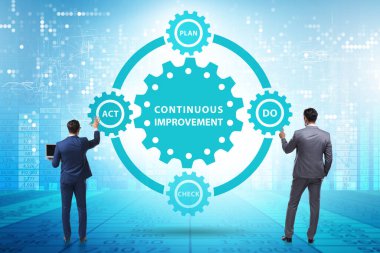The Role of 5G in Driving Digital Acceleration for Enterprises

In the rapidly evolving digital landscape, businesses need to be agile, efficient, and innovative to stay competitive. 5G technology is emerging as a transformative force that empowers enterprises to accelerate their digital initiatives, enhance customer experiences, and create more connected products. With its promise of ultra-fast speeds, low latency, and massive connectivity, 5G is set to revolutionize digital acceleration across industries.
In this blog, we will explore how 5G is enabling enterprises to build faster, smarter digital platforms and products, as well as key industry use cases where 5G is already driving significant change.
How 5G Technology Enables Faster Digital Platforms
The introduction of 5G technology is reshaping the way enterprises approach their digital strategies. By providing a foundation of high-speed connectivity, 5G enhances digital platforms' performance and enables businesses to create more dynamic, responsive, and real-time solutions. Here’s how 5G accelerates digital platforms:
1. Increased Speed and Bandwidth: 5G offers speeds that are up to 100 times faster than 4G, allowing businesses to process and transfer data more quickly than ever before. This higher bandwidth supports the development of data-intensive applications and platforms that require real-time access to large datasets. Whether it’s enabling quicker transactions in finance, faster streaming in entertainment, or rapid analytics in retail, 5G drives greater efficiency across the board.
2. Ultra-Low Latency: One of 5G's standout features is its low latency, which enables near-instantaneous communication between devices. Latency in 5G can be as low as 1 millisecond compared to 30-50 milliseconds in 4G. This low latency allows digital platforms to offer real-time responsiveness, which is critical for applications like autonomous vehicles, telemedicine, and industrial automation.
3. Enhanced IoT Connectivity: With 5G, the number of connected devices per square kilometer can reach over 1 million. This massive IoT connectivity allows businesses to leverage smart devices, sensors, and real-time data collection at scale, creating more intelligent ecosystems. As businesses shift to connected products and services, 5G acts as the backbone that supports these expansive networks, allowing seamless communication across devices.
4. Scalability and Flexibility: 5G’s flexibility enables businesses to scale their digital platforms quickly. Enterprises can deploy 5G-enabled solutions across global markets and ensure a consistent experience regardless of geography. This scalability also supports cloud-native architectures, allowing enterprises to shift their workloads dynamically and in real-time, without compromising performance.
5G-Driven Industry Use Cases: Revolutionizing Digital Products and Services
The adoption of 5G technology is driving tangible transformation across industries, from healthcare to manufacturing to retail. Here are some key use cases where 5G is already revolutionizing digital products and services:
1. Healthcare: Telemedicine and Remote Monitoring: In healthcare, 5G is transforming telemedicine and remote patient monitoring. The ultra-fast speeds and low latency enable real-time virtual consultations, remote diagnostics, and robotic-assisted surgeries. For patients in remote areas, 5G opens access to high-quality care without needing to travel to urban centers. Furthermore, connected medical devices—powered by 5G—can collect and transmit patient data in real time, allowing healthcare providers to proactively monitor and treat patients.
2. Manufacturing: Smart Factories and Industrial Automation: 5G is a catalyst for smart manufacturing and Industry 4.0. In smart factories, 5G enables seamless communication between robots, machines, and control systems, driving real-time automation and precision control. This connectivity enhances predictive maintenance by collecting data from sensors on equipment and alerting operators to potential issues before they occur. It also improves operational efficiency by streamlining production workflows and optimizing energy usage.
3. Retail: Enhanced Customer Experiences and Supply Chain Efficiency: In the retail sector, 5G is enabling personalized, in-store experiences and enhancing supply chain efficiency. Retailers can use augmented reality (AR) and virtual reality (VR) applications, powered by 5G, to offer immersive shopping experiences. For example, customers can virtually “try on” clothing or visualize products in their homes in real time. Additionally, 5G is enhancing the supply chain by enabling real-time inventory tracking, smart logistics, and autonomous delivery systems.
4. Automotive: Autonomous Vehicles and Connected Mobility: The automotive industry is one of the key beneficiaries of 5G technology. Autonomous vehicles require real-time data exchange to make split-second decisions, and 5G provides the low-latency, high-speed connectivity necessary to power these systems. Connected vehicles can communicate with each other, as well as with smart city infrastructure, enabling safer and more efficient transportation systems. This connectivity also supports vehicle-to-everything (V2X) communication, enhancing traffic management and reducing accidents.
5. Finance: Real-Time Transactions and Edge Computing: The finance industry relies on real-time data processing for transactions, fraud detection, and customer service. 5G’s high-speed connectivity and edge computing capabilities allow financial institutions to offer instant transaction processing and real-time fraud detection. Additionally, AI-driven financial services can operate more effectively, delivering personalized advice and automated portfolio management with real-time market insights.
The Future of 5G in Digital Acceleration
The widespread adoption of 5G will continue to redefine digital acceleration for enterprises across industries. By enhancing speed, connectivity, and real-time data processing, 5G enables businesses to stay agile, rapidly adapt to market changes, and deliver superior digital products and services.
For businesses looking to stay competitive in this fast-evolving digital landscape, 5G offers the foundation to build next-generation digital platforms that are scalable, flexible, and future-proof. As more enterprises embrace cloud-native architectures, AI-driven automation, and IoT connectivity, 5G will become an essential enabler of innovation and growth.
At Raphus Solutions, we are committed to helping enterprises leverage the transformative power of 5G to accelerate their digital journeys. Our digital engineering solutions are designed to support businesses in harnessing the potential of 5G technology, driving innovation, and delivering seamless digital experiences to their customers.
Conclusion
5G is not just a faster network; it’s a key enabler of digital acceleration, empowering enterprises to build more efficient, connected, and innovative platforms and products. By revolutionizing industries from healthcare to retail, 5G offers the potential to unlock new opportunities for growth, enhance operational efficiency, and improve customer experiences.
Enterprises that adopt 5G technology as part of their digital strategies will be better positioned to lead the future of innovation, delivering products and services that are more responsive, scalable, and aligned with the needs of the modern world.



